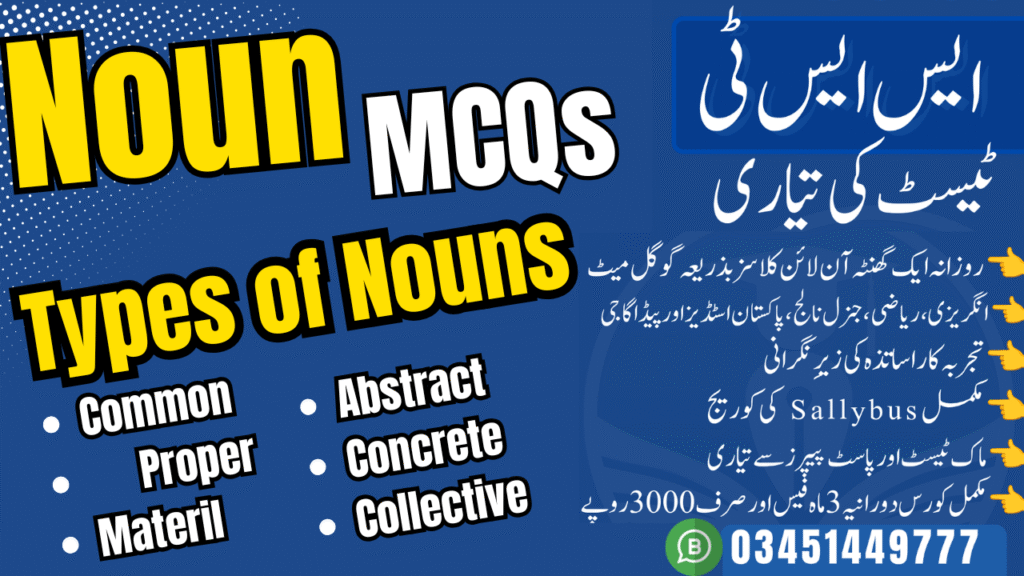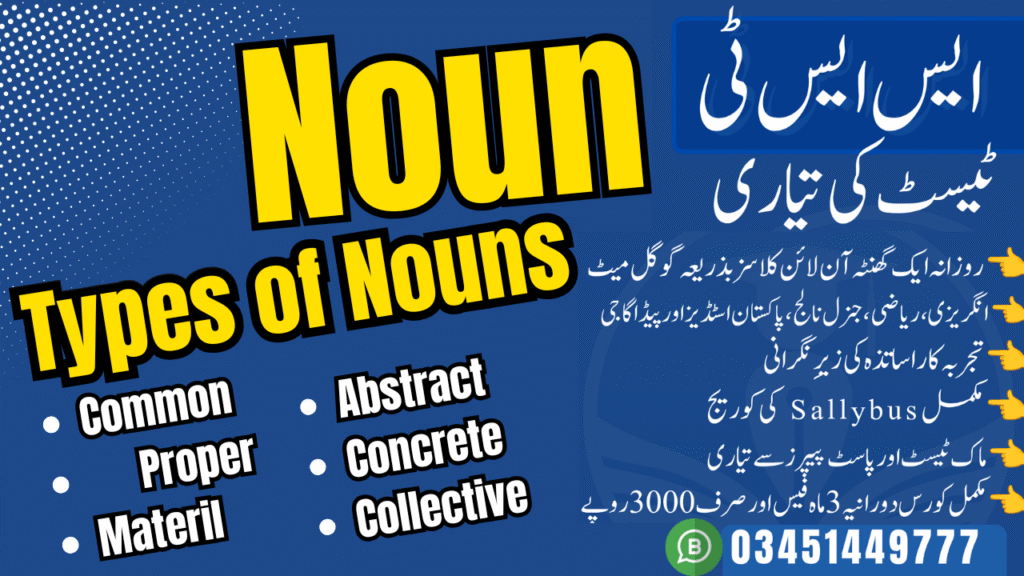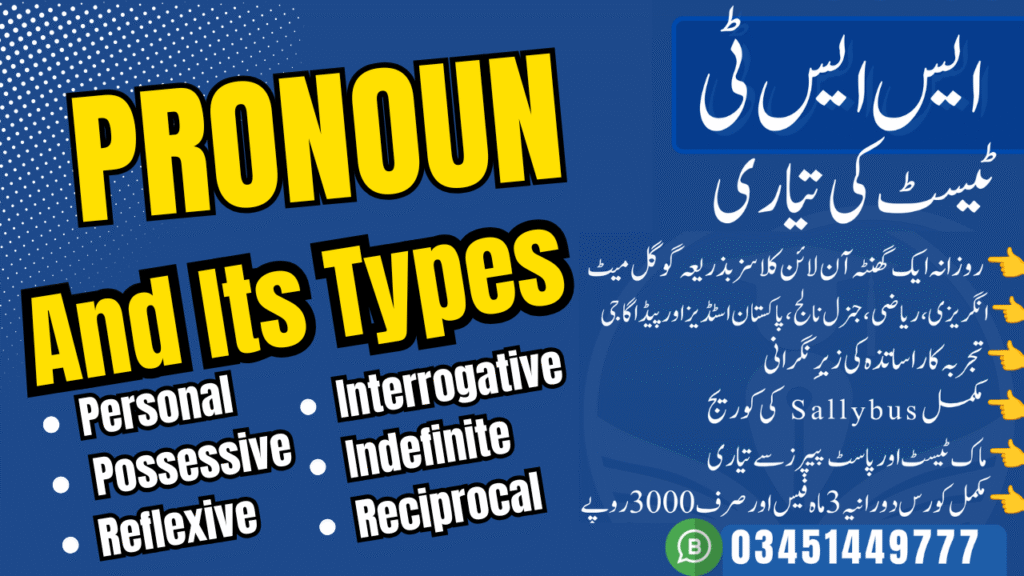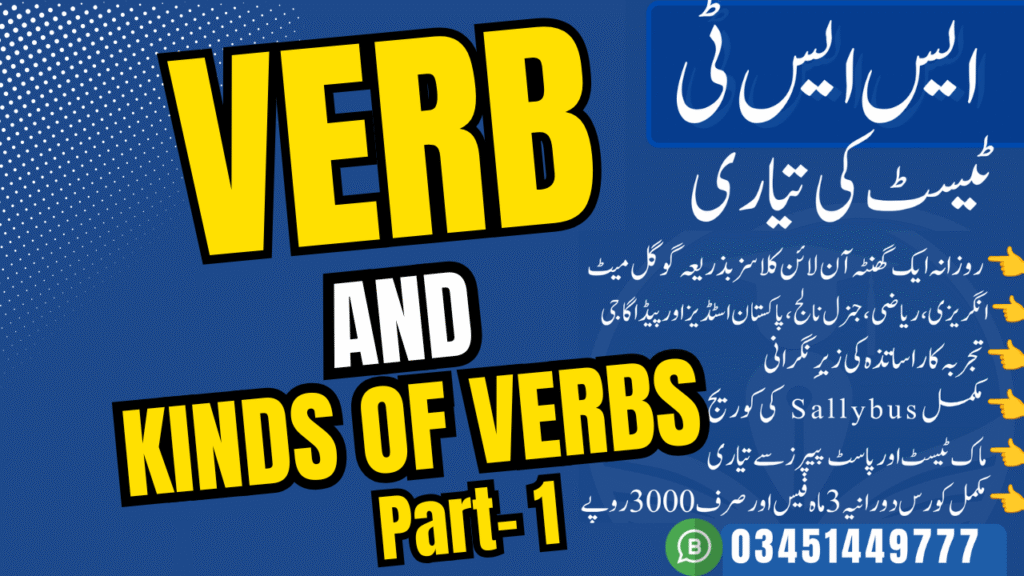Adjective: A Comprehensive Guide for the Test Aspirants
An adjective is a word that modifies, defines, or describes a noun or noun phrase, providing essential information that transforms vague concepts into vivid, precise images.
Adjectives answer fundamental questions about the nouns they accompany:
What kind?
How many?
Which one?.
For example, when one states, “Danish is a diligent student,” the adjective diligent clarifies the nature of his academic habits.
Similarly, when we say, “Wadan bought three new books,” the adjective three provides a specific quantity.
The position of an adjective within a sentence is important and can be categorized into three main types. The most common is the attributive adjective, which is placed directly before the noun it modifies.
In the sentence, “Rehan read an engaging novel,” the word engaging serves this function, directly modifying the noun novel.
Secondly, a predicative adjective follows a linking verb (such as is, was, seem, feel, or become) and describes the subject of the sentence.
For example, in the phrase, “The project was challenging,” the adjective challenging follows the linking verb was and provides a description of the subject project.
A third, less common position is the postpositive adjective, which is placed immediately after the noun or pronoun it modifies. This is often used for emphasis or with indefinite pronouns, as in, “We need something new to spark our creativity”.
In Urdu, adjectives also appear in both attributive (preceding the noun) and predicative (following the noun) positions.
The attributive phrase “this is a good book” translates to yeh ek achhi kitab hai (یہ ایک اچھی کتاب ہے), where the adjective precedes the noun.
Conversely, “this book is good” is rendered as yeh kitab achhi hai (یہ کتاب اچھی ہے), with the adjective following the noun.
Kinds and Types Adjectives
Adjectives can be classified into several distinct categories, each serving a unique function in modifying nouns. Understanding this comprehensive taxonomy is fundamental to achieving grammatical precision and fluency.
Descriptive and Qualitative Adjectives
These are the most common types of adjectives. They describe the characteristics, traits, or qualities of a noun and answer the question “what kind?”.
These words add detail and richness to language.
- A beautiful sunset
- A courageous leader
- An honest man
In a local context, we could say, “Waseem is a handsome boy” or “This is a delicious biryani,” where handsome and delicious are descriptive adjectives.
Quantitative and Distributive Adjectives
These adjectives provide information about the quantity of a noun, answering the questions “how many?” or “how much?”.
They can be further subdivided into precise and unspecific categories.
- Cardinal Numbers: Words that denote a specific count, such as one, three, or seven. For example, “Three students, including Zeeshan, were selected for the debate.”
- Ordinal Numbers: Words that indicate a position or rank, such as first, fifth, or sixteenth.
- Indefinite Adjectives: These specify quantity in a non-specific sense, including words like some, few, many, and all.
- Distributive Adjectives: These refer to members of a group individually, such as each, every, either, or neither.
For example, “Every participant received a certificate of completion.”
The distinction between few and a few, as well as little and a little, is a crucial and often misunderstood point. The inclusion or omission of the indefinite article fundamentally alters the meaning and connotation of the sentence. When used without a, few and little convey a negative or limiting sense, emphasizing a lack of something. Few means “not many,” and little means “hardly any”.
For example, if Adnan has few friends, it suggests he is lonely because he lacks a sufficient number of companions. Conversely, when the article a is added, the words take on a positive or neutral tone. A few means “some,” and a little means “a small amount,” emphasizing that a quantity exists, even if it is not large.
Consider the same example: if Adnan has a few close friends, the statement implies that he has enough friends to be content.
This subtle but critical difference in meaning is essential for expressing oneself accurately and with appropriate emotional tone.
This applies to uncountable nouns as well: “We had little time left” has a negative sense of scarcity, while “We had a little extra time” conveys a positive sense of having some available time.
Demonstrative, Possessive, Interrogative, Proper, Compound, and Participial Adjectives
Beyond the descriptors and quantifiers, other adjective types provide specific information about nouns.
- Demonstrative Adjectives: These words point out a specific noun. They are this, that, these, and those. For example, “That book belongs to Bilal.”
- Possessive Adjectives: These indicate ownership or possession. The most common possessive adjectives are my, your, his, her, our, their, and its. For example, “His car is parked outside.”
- Interrogative Adjectives: These are used to ask questions and include what, which, and whose. An example would be, “
Whose phone is this?” - Proper Adjectives: These are derived from proper nouns and, like their parent words, are always capitalized. Common examples are Pakistani from Pakistan and Victorian from Victoria.
- Compound Adjectives: Formed by two or more words, often hyphenated, to function as a single descriptive unit. For example, “a
well-known journalist” or “a four-wheel drive vehicle.” - Participial Adjectives: These words are derived from verbs but act as adjectives. They typically end in -ing or -ed. For example, a
” broken window” or an “amazing story.”
Click here TO attempt the MCQs Test on Adjectives
Degrees of Comparison
Adjectives can change their form to express a degree of quality, allowing for comparisons between different nouns. This is an essential aspect of descriptive language.
The Three Degrees: Absolute, Comparative, and Superlative
- Absolute Adjectives: These describe a quality in its simplest form, without comparison. Words like old, tall, fast, or beautiful are absolute adjectives.
- Comparative Adjectives: Used to compare two people or things. For one-syllable adjectives, the suffix -er is typically added (e.g., tall becomes taller). For longer adjectives, the word more is placed before the adjective (e.g., beautiful becomes more beautiful). A comparison often uses the word than. For example, “Bilal’s project is more creative than Usama’s.”
- Superlative Adjectives: Used to compare three or more people or things, indicating the highest degree of a quality. For one-syllable adjectives, the suffix -est is added (e.g., tall becomes tallest). For longer adjectives, most is used (e.g., beautiful becomes most beautiful). Superlative adjectives are almost always preceded by the definite article the. An example would be, “Daniyal is the smartest student in the class.”
While these rules are generally consistent, a number of common adjectives have irregular comparative and superlative forms that do not follow the standard patterns and must be memorized. Examples include good which becomes better and best, bad which becomes worse and worst, and far which becomes farther or further, and farthest or furthest.
An important concept in this discussion is the existence of adjectives that are, by their very nature, non-gradable or absolute. These adjectives describe qualities that cannot be measured in degrees, as they are either fully present or not at all. A common error is attempting to apply comparative or superlative forms to these words. For example, a person or a thing is either dead or not; it cannot be “more dead.” A circle is round, not “rounder.” A solution is complete, not “more complete”. Words such as unique, perfect, empty, and infinite fall into this category. The misuse of these adjectives often signifies a lack of grammatical sophistication. The correct usage of an absolute adjective is in its simple form, without modification by words like more, most, less, or very. For example, the correct phrase is “This design is unique,” not “This is the most unique design.”
The Adjective’s Position
When multiple adjectives are used to modify a single noun, they do not appear in a random sequence.
English grammar dictates a specific, intuitive order that native speakers learn through exposure from a young age.
While this order may seem mysterious, it follows a logical progression from the most subjective and general adjectives to the most objective and specific.
The accepted acronyms for this sequence are
DOSASCOMP or OSASCOMP.
The correct order is as follows:
| Category | Description | Examples |
| Determiner | A word that introduces or signals a noun. | a, the, my, these |
| Quantity | A number or non-specific amount. | one, many, some |
| Opinion | A subjective judgment about the noun. | beautiful, delicious, silly |
| Size | The physical dimensions of the noun. | big, tiny, tall |
| Age | How old or new the noun is. | old, young, new |
| Shape | The physical form or outline. | round, square, rectangular |
| Color | The color of the noun. | red, blue, green |
| Origin | The source or place of the noun. | Pakistani, French, Italian |
| Material | What the noun is made of. | wooden, leather, plastic |
| Purpose | What the noun is used for. | washing (as in washing machine), running (as in running shoes) |
| Noun | The word being modified. | car, uniform, phone |
Consider a practical example: “Rehan was a courageous, young, Pakistani soldier, wearing his new, big, green, waterproof uniform, ready for the challenging mission.”
In this sentence, courageous (Opinion), young (Age), and Pakistani (Origin) modify the noun soldier. The second sequence, new (Age), big (Size), green (Color), and waterproof (Purpose), modifies the noun uniform, following the correct order. Adjectives of purpose or type are a special case, as they must always be placed directly next to the noun.
It is also important to distinguish between coordinate and non-coordinate adjectives. When adjectives from the same category modify a noun, they are considered coordinate and can be separated by a comma or the word and.
For example, a long, cold winter is correct, as long and cold are both physical qualities, and their order is interchangeable. However, when adjectives from different categories are used, they are non-coordinate and should not be separated by a comma, as their order is fixed by the Royal Order of Adjectives. The phrase a big, red house is incorrect because big (Size) and red (Color) are from different categories and must follow the prescribed order: a big red house.
How Words Become Adjectives?
Beyond their functional classifications, adjectives are also formed from other parts of speech through the addition of suffixes and, in some cases, prefixes. Understanding these morphological transformations is a powerful tool for vocabulary building and lexical versatility.
Adjectives are often formed from nouns by adding specific suffixes. For example, the suffix -ful meaning “full of” or “having the quality of,” can be added to the noun care to form the adjective careful.
Similarly, the suffix -less, meaning “without” or “lacking,” can be added to the noun hope to form the adjective hopeless. Other common suffixes include -ous (from danger to dangerous), -al (from nation to national), and -ic (from drama to dramatic).
Adjectives can also be formed from verbs.
The suffix -able or -ible indicates that something “can be” or is “capable of” an action, as in breakable from the verb break or legible from the verb read. The suffix -ive signifies a tendency or nature, turning the verb respond into the adjective responsive.
Furthermore, prefixes are used to create the opposite meaning of an adjective.21 Prefixes such as un-, in-, im-, il-, and ir- are commonly used to negate a word. For example, happy becomes unhappy and polite becomes impolite.
This knowledge of adjective formation is not merely an academic exercise; it is a critical skill for any aspiring grammarian or writer.
Being able to recognize how a base word transforms allows a speaker to not only expand their vocabulary but also to vary their sentence structure, a key indicator of advanced language proficiency.
For example, instead of saying, “The idea has gained influence,” one can express the same thought more fluidly by saying, “The idea has become increasingly influential.” This shift demonstrates a command over the language that goes beyond simple word retrieval.
Common Misinterpretations
For learners of English, a number of common errors in the use of adjectives can hinder effective communication. Addressing these pitfalls directly is essential for achieving a high level of accuracy and fluency.
Mistake No. 1: Confusing Adjectives and Adverbs
One of the most frequent errors is using an adjective where an adverb is required, and vice versa. The fundamental rule is that adjectives modify nouns and pronouns, while adverbs modify verbs, adjectives, or other adverbs. A classic example of this confusion is the misuse of
good and well. Good is an adjective, and well is an adverb.
- Incorrect: Bilal plays cricket good.
- Correct: Bilal plays cricket well.
In the incorrect sentence, the adjective good is mistakenly used to modify the verb plays. The correct sentence uses the adverb well to describe how the action is performed.
Mistake No. 2: The “More Easier” Blunder
Another widespread mistake is the use of a double comparative or superlative form. This involves combining the comparative form of an adjective (ending in -er) with the word more, or the superlative form (ending in -est) with the word most.
- Incorrect: This task is more simpler than the last one.
- Correct: This task is simpler than the last one.
The rule is simple: use either the suffix (-er or -est) or the modifying word (more or most), but never both simultaneously.
Mistake No. 3: The -ed vs. -ing Confusion
Adjectives ending in -ed and -ing are often used incorrectly, leading to miscommunication. The key to differentiation lies in their function: -ing adjectives describe the thing or person causing a feeling, while -ed adjectives describe the person experiencing that feeling.
- Correct: The documentary was boring. (The documentary is the cause of the boredom.)
- Correct: The audience was bored. (The audience felt the boredom.)
A person can be confused (feeling confusion) by a confusing presentation (the presentation caused confusion).
Mistake No. 4: The Overuse of “Very”
Relying too heavily on the word very to intensify adjectives can make language sound weak and uninspired. A more sophisticated approach is to use stronger, more precise adjectives that already contain the meaning of a high degree.
- Instead of: The tea was very hot.
- Say: The tea was scalding.
- Instead of: Rehan was very tired.
- Say: Rehan was exhausted.
This technique not only strengthens the vocabulary but also makes the communication more expressive and impactful.
A deeper understanding of language variations, such as those found in Pakistani English, reveals that some of these “mistakes” are not simply random errors but systematic lexical and syntactic patterns. For example, the use of adverb-adjective combinations where the adverb intensifies the adjective, as in hopelessly addicted or deeply absorbed, is a predictable feature in this regional variant.24 Acknowledging this difference demonstrates a nuanced appreciation for the learner’s linguistic background and provides a richer understanding of grammar beyond rigid, universal rules.
English-Urdu Comparison
To truly grasp the concepts of English adjectives, a learner from a Pakistani background can benefit immensely from a direct comparison to Urdu grammar. While English and Urdu both utilize attributive and predicative adjective placement, a fundamental difference lies in the concept of gender and number agreement.
In Urdu, adjectives are classified as either “marked” or “unmarked”. A marked adjective, which typically ends in the vowel sound /-a/, changes its form to agree with the gender and number of the noun it modifies.
For example, bara (بڑا) meaning “big,” changes to bari (بڑی) for a feminine noun like larki (girl) and bare (بڑے) for a plural noun like larke (boys).
- Urdu: Bara larka (بڑا لڑکا) (big boy), Bari larki (بڑی لڑکی) (big girl), Bare larke (بڑے لڑکے) (big boys).
In stark contrast, English adjectives are invariable. They do not change their form to agree with the noun’s gender, number, or case.
- English: a big boy, a big girl, big boys.
The adjective big remains unchanged regardless of the noun it modifies. For a learner whose native language requires this consistent grammatical agreement, the simplicity of the English rule may be a source of potential confusion, as they may unconsciously try to apply a change where none is needed. By explicitly highlighting this difference, the learning process becomes more conscious and deliberate, allowing the student to avoid a common pitfall rooted in their native linguistic conditioning.






